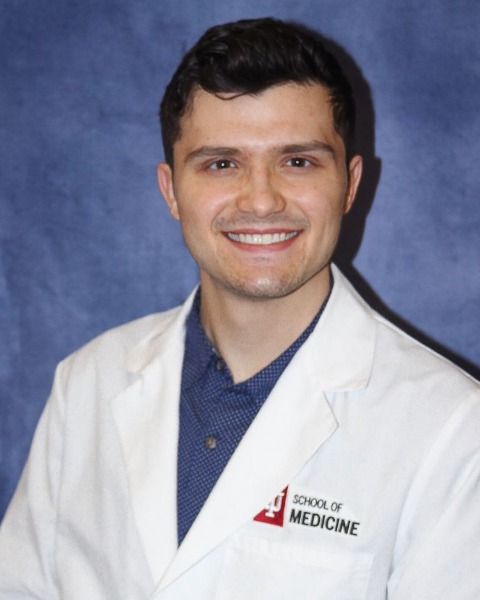Spine
Postoperative Dysphagia Negatively Impacts Return to Work and Daily Activities Following Cervical Spine Surgery

Nathan J. Kussow, BS
Medical Student
Goodman Campbell Brain and Spine
Presenting Author(s)
Introduction: To evaluate the impact of dysphagia on patients’ ability to return to work and engage in outside activities following anterior or posterior cervical spine surgery.
Methods: A multi-institution spine registry was retrospectively reviewed from 2016 to 2023. An Eating Assessment Tools-10 score ≥ 3 was used to quantify preoperative and 12-month postoperative dysphagia. Sustained dysphagia was defined as new dysphagia after surgery that lasted at least 12 months postoperatively. Return to work (RTW) and outside activity status (ROA) were assessed at baseline and 12 months postoperatively. The RTW cohort excluded permanently unemployed and retired patients. Pearson’s Chi-squared tests and multivariate logistic regression were applied to evaluate the effect of dysphagia on RTW and ROA.
Results: Of the 229/1,202 ROA (19.0%) and 101/698 RTW (14.5%) patients who reported experiencing sustained dysphagia; 200 ROA (87.0%) and 92 RTW (91.0%) had anterior surgery. There was no significant difference in rates of sustained dysphagia based on surgical approach for ROA (p=0.78) or RTW (p=0.30). Preoperatively, there were 698 patients (58.1%) fully employed or on short-term leave, 327 patients (27.2%) retired, and 84 patients (7.0%) on permanent disability. At baseline, 1,153 patients (95.9%) reported participating in activities outside the home before the onset of spine pathology. At 12 months follow-up, RTW and ROA status were collected for 678 patients (97.1%) and 1,187 patients (98.8%), respectively. A significantly lower rate of RTW (95% vs 86%, p< 0.001) and ROA (80% vs 64%, p< 0.001) were observed in patients with sustained dysphagia. Multivariable analysis identified dysphagia as an independent predictor of not returning to work (OR: 0.48 95% CI: 0.23-1.02; p=0.048) or outside activities (OR: 0.50 95% CI: 0.36-0.69; p< 0.001).
Conclusion : Dysphagia had a significant negative impact on a patient’s ability to RTW and ROA after cervical spine surgery regardless of approach, highlighting the influence of dysphagia on patients’ lives.
Methods: A multi-institution spine registry was retrospectively reviewed from 2016 to 2023. An Eating Assessment Tools-10 score ≥ 3 was used to quantify preoperative and 12-month postoperative dysphagia. Sustained dysphagia was defined as new dysphagia after surgery that lasted at least 12 months postoperatively. Return to work (RTW) and outside activity status (ROA) were assessed at baseline and 12 months postoperatively. The RTW cohort excluded permanently unemployed and retired patients. Pearson’s Chi-squared tests and multivariate logistic regression were applied to evaluate the effect of dysphagia on RTW and ROA.
Results: Of the 229/1,202 ROA (19.0%) and 101/698 RTW (14.5%) patients who reported experiencing sustained dysphagia; 200 ROA (87.0%) and 92 RTW (91.0%) had anterior surgery. There was no significant difference in rates of sustained dysphagia based on surgical approach for ROA (p=0.78) or RTW (p=0.30). Preoperatively, there were 698 patients (58.1%) fully employed or on short-term leave, 327 patients (27.2%) retired, and 84 patients (7.0%) on permanent disability. At baseline, 1,153 patients (95.9%) reported participating in activities outside the home before the onset of spine pathology. At 12 months follow-up, RTW and ROA status were collected for 678 patients (97.1%) and 1,187 patients (98.8%), respectively. A significantly lower rate of RTW (95% vs 86%, p< 0.001) and ROA (80% vs 64%, p< 0.001) were observed in patients with sustained dysphagia. Multivariable analysis identified dysphagia as an independent predictor of not returning to work (OR: 0.48 95% CI: 0.23-1.02; p=0.048) or outside activities (OR: 0.50 95% CI: 0.36-0.69; p< 0.001).
Conclusion : Dysphagia had a significant negative impact on a patient’s ability to RTW and ROA after cervical spine surgery regardless of approach, highlighting the influence of dysphagia on patients’ lives.

.jpg)